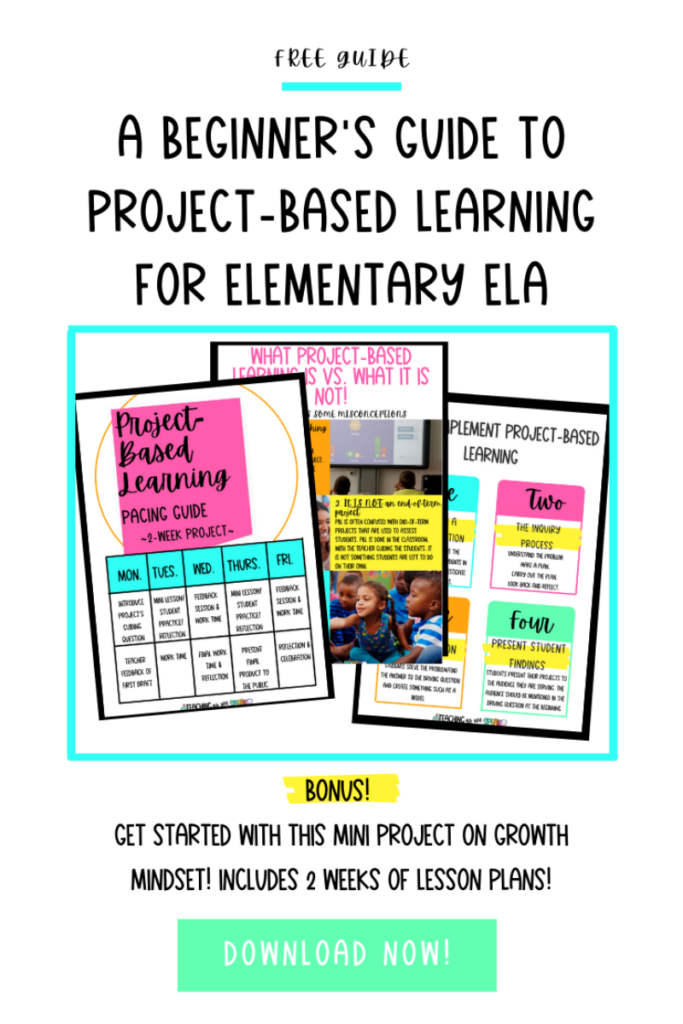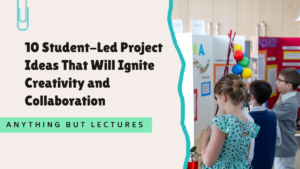What is it about teachers and reading? Are we hard-wired to love read-alouds? Is it just me, or is there no better feeling than sitting on a comfy chair and reading a picture book to students? While this seems to be a common trait among teachers, many of us don’t utilize picture books enough. We don’t know how to use picture books in the classroom to their full potential.
Keep reading to check out 3 ways to use picture books in your classroom, no matter the grade!
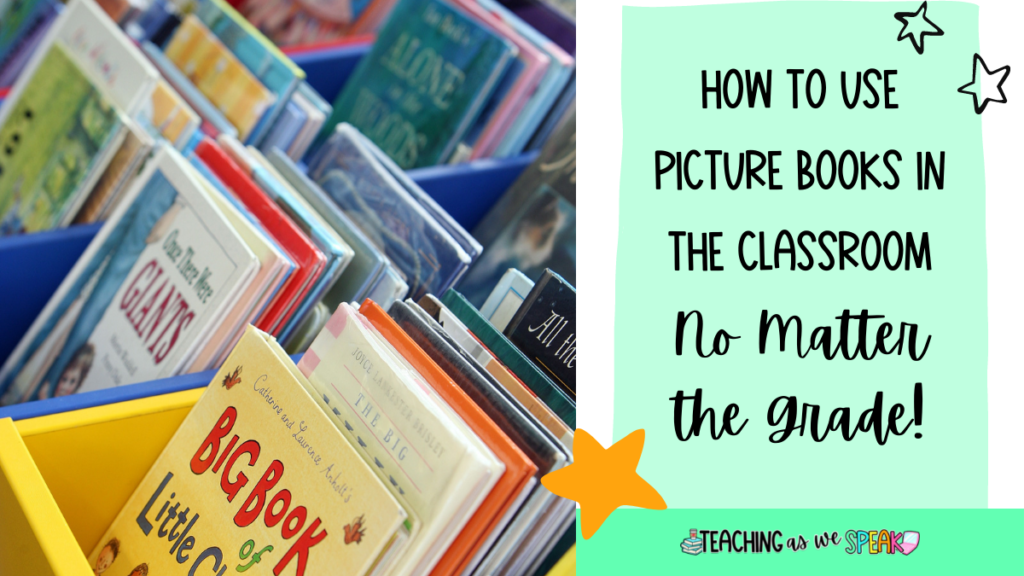
Are you an elementary ELA teacher who loves planning engaging lessons for your students? Download the Beginner’s Guide to Project-Based Learning for Elementary ELA now! It includes a guide and a 2-week project on growth mindset. Click here to get it now!
Strategy #1 Character Traits Read Aloud
First, one of my favourite parts about picture books is their ability to give us a feel for the characters’ traits in such a short text. Authors of picture books have to be very good at giving us examples of different personality traits in a short amount of time. That’s why I love using picture books to model different character traits for my students.
The best part is this can be applied to any grade!
For younger students, you can explore basic character traits such as someone nice, mean, helpful etc… One strategy to use with students is to:
- Give each student coloured cards (red for mean, blue for lonely, green for kind and so forth).
- As characters in the story are mentioned, students can hold up the cards based on how they think the character is being portrayed.
- This can lead to a discussion on finding examples from the text that lead to that reasoning.
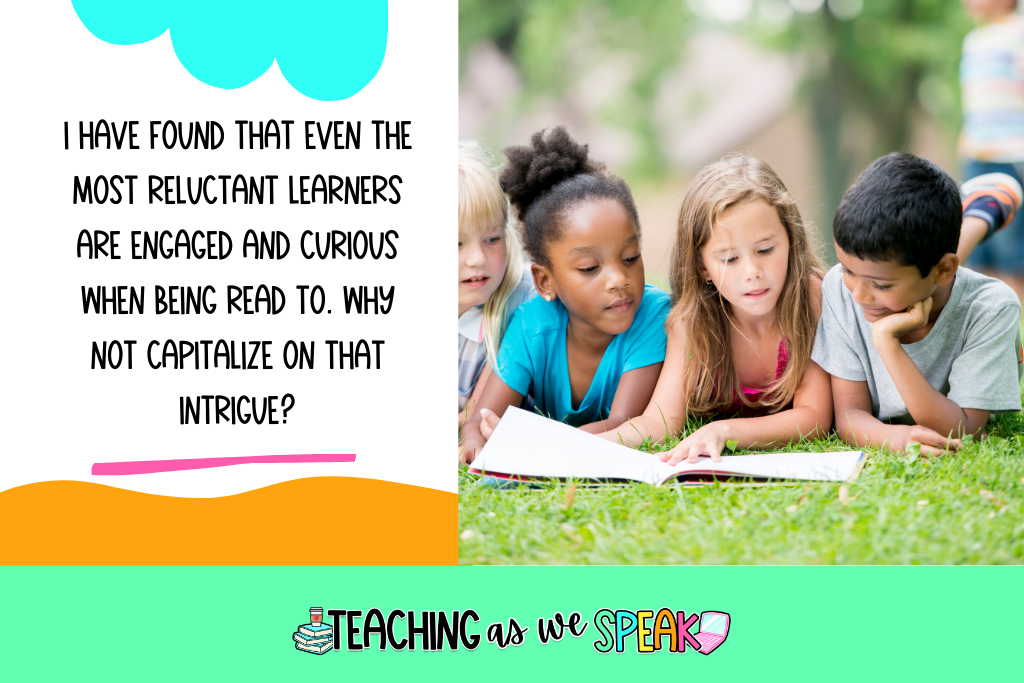
For older students, the character traits can become more increasingly complex. You could:
- Provide flashcards with more complex emotions (Ex: jealous, spiteful, generous, etc…). Students could hold up the card based on how each character in the story is acting. Students could then justify their reasoning using examples from the text
- Compare and contrast the character’s traits. This could be done on a Venn Diagram after the story is read or through an informal discussion during the read aloud
- Hold a hot seat! After the read-aloud, students will take turns playing a character from the read-aloud. The other students will take turns asking the character/student questions about their experience in the story.
- Have a Battle Royal. Pit two characters against each other in certain hypothetical challenges (ex: who would be most likely to forget their homework at home? Which character is most likely to help an elderly person cross the street, etc…)
How to Use Picture Books in the Classroom When Grammar rules need to be Introduced or Applied
Let’s be honest, teaching grammar rules can be boring. I’d go as far as to say that grammar skills/standards are the most boring to teach. That’s why I like using picture books to introduce or teach grammar rules. Using picture books can lead to great discussions about why certain rules are used and when to know when to apply a specific grammar rule.
Pro Teacher Tip: If you are using picture books to teach a grammar rule (or any skill for that matter), be sure to use a picture book students are familiar with. Have a new picture book in mind? Great! Maybe read it first to students once or twice before your grammar lesson. That way, students aren’t struggling to take in a new story AND a new grammar rule.
Click here to check out this Fix the Sentence Grammar Resource!
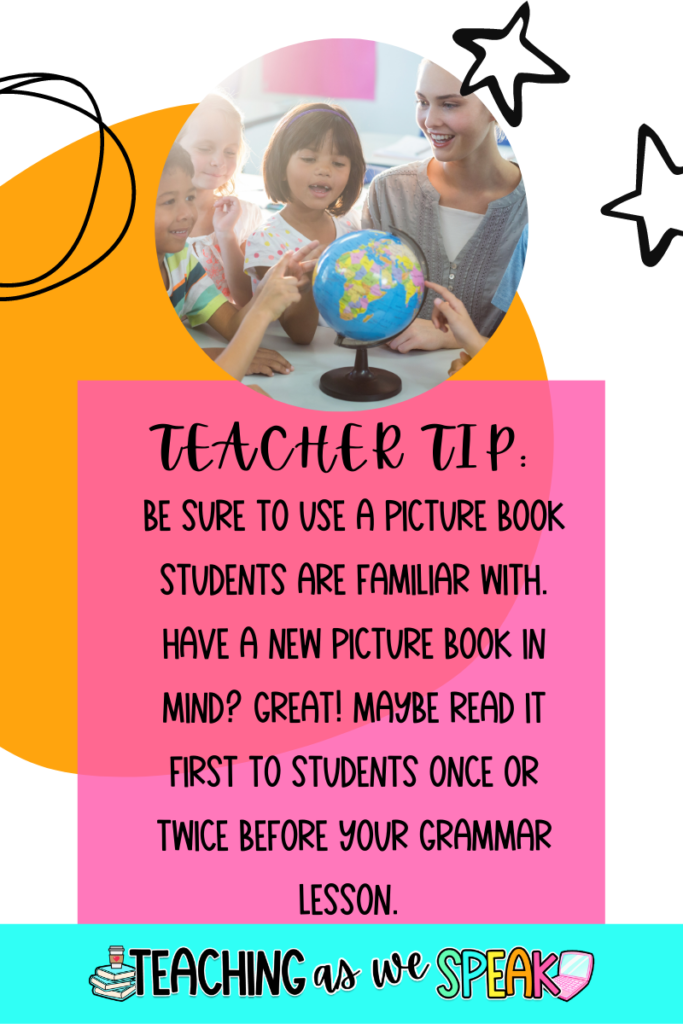
Some ways to lead a discussion about a grammar rule using a picture book:
- “Did anyone else notice that…”
- “I wonder why the other used…”
- “Can someone tell me why the author used…”
- “Raise your hand if you too noticed that this sentence includes…”
Click here to download the free Beginner’s Guide to Project-Based Learning for Elementary ELA.
How to Use Picture Books in the Classroom-Why is the Setting Important?
Finally, Picture books are a great way to teach about different settings.
Why is the Setting Important? As a teacher who teaches project-based learning, I am constantly immersing my students in different cultures, periods and social situations. This can be a lot for younger students to understand. That’s why I like to use as many texts as possible to help students envision what I am asking them to experience. Illustrations and examples of social situations that can be found in picture books are extremely helpful for this.
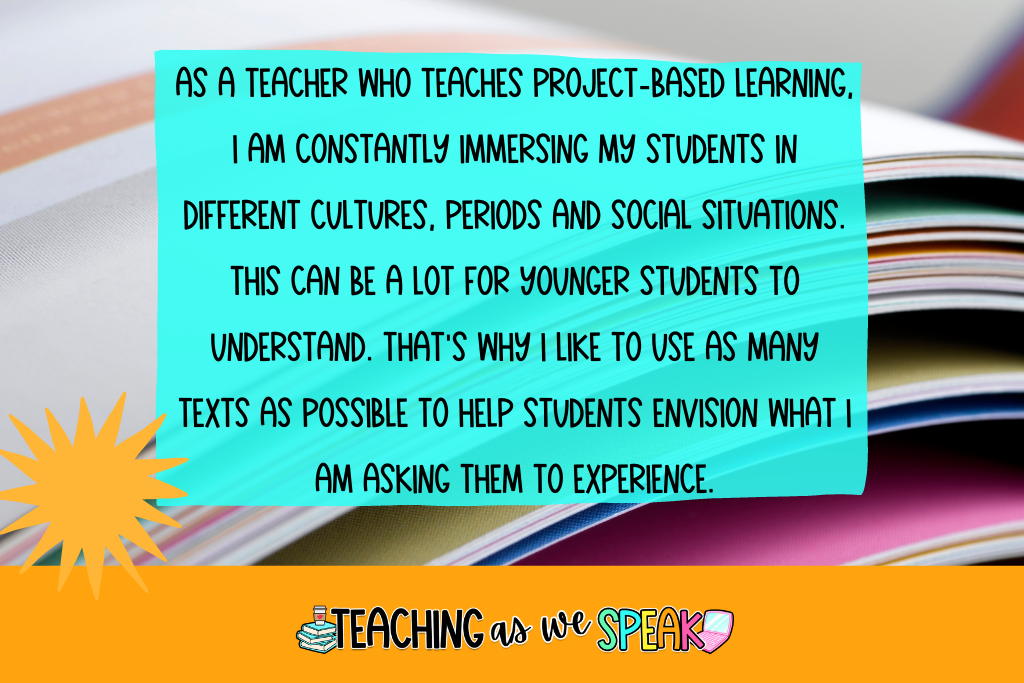
Some examples of how I’ve done this in the past include:
-Reading The Most Magnificant Thing when teaching my students about creating something new and entrepreneurship
-Modeling growth mindset by using the story The Girl Who Never Made Mistakes
-Using The Word Collector when my students are doing a project on words and how words are added into the dictionary
Final Thoughts
Some of my favourite times with my students are when I am reading a picture book to them. I love how excited and interested they become in a story. I have found that even the most reluctant learners are engaged and curious when being read to. Why not capitalize on that intrigue?
Have any other strategies for using picture books? Comment down below!
Check out these related blog posts:
Engage Students With These 5 PBL Ideas
How to Build Curiosity in Students With These 5 Daily Habits
Also, be sure to check out some friends’ posts:
5 back to school read alouds to build classroom community (& a bulletin board!)
Creating Thanksgiving Memories
PS-Don’t forget to grab your free Beginner’s Guide to Project_based Learning before you go! Click here to get it now!


